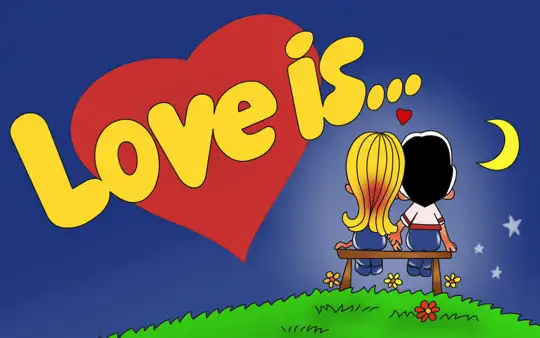Forward this email to ten of your contacts or expect a nasty surprise in the morning. Reblog this post by midnight and you'll receive good news. Share the money cat and you'll be rich. We are all victims of the 2000s chainmail industrial complex.

And while we might think we're safe from superstitious posts these days with the advent of spam filters and privacy tools, TikTok (an app that is both the bane of our existence and love of our lives) has simply ushered in the next wave of chainmail posts. Is it a sign of regression, or just another way TikTok users are repurposing old internet culture?
SEE ALSO: The real meaning behind the crab emoji is darker than you thinkTikTok's preferred form of chainmail is more positive than the eerily threatening reblog or you'll die posts of a decade ago. Instead, users upload videos of themselves with meditative music or viral sounds behind them, alleging that the audio brings good luck and prosperity. Users write captions like This sound is no joke actually! I'm making more money than i've ever seen now and my life is gr8! or simply, Don't skip. They might just show something really cool that's happened to them, like buying a new laptop and hint at the sound's effect. Some don't even care if you post the sound on your public profile, encouraging users to simply save the sound or video to their favorites folder or keep the video in their drafts (doing this, of course, still helps the original creator get views, engagement, and prioritize their content in TikTok's algorithm).
Because of TikTok's unique duet feature, these users can then return to their posts weeks or months later with awe-inspiring updates, encouraging users to continue using the sounds or liking their videos. It's a distinctly new form of chainmail but still reeks of those old emails and Tumblr posts behind the screen.
This kind of revamping is happening across the app in a multitude of other ways, too.
Cursed TikTok mashups — like the Mickey Mouse Clubhouse/ Adele crossover, the particularly jarring mashup of You've Got a Friend in Me and W.A.P., or even meme remixes like Chrissy, wake up! — are a shining relic of Internet Past, invoking the blended song masterpieces that made up a large portion of YouTube's homepage decades ago.
While the rise of Hip-Hop revolutionized the practice of mixing together instrumentals and lyrics in creative ways, the first cursed song mashup is frequently attributed to The Evolution Control Committee, an experimental music group that now calls itself a mash-up band. In 1994, the group released a blended version of Public Enemy lyrics on top of instrumentals by Herb Alpert and the Tijuana Brass. YouTube meme makers latched onto the trend, and today, through the magic of TikTok, cursed song mashups appear, and go viral, almost daily.
TikTok isn't just continuing the trend, it's also bringing back old names in the online remixing game. The overnight rise of TikTok's corn kid gave birth to a now immensely popular corn kid song, which splices together lines from TikTok on top of a fun, synth-based beat and electronic harmonies. The jingle was created by @Schmoyoho, a project and original YouTube channel created by musical group The Gregory Brothers. TikTok user @RubyRoseu spotted that it was the same guy behind other classic meme remixes like the Double Rainbow, Oh My Dayum, and Bed Intruder songs. Schmoyoho is also behind the Stranger Things remix that probably took over your FYP for months on end.
Other internet icons, not just music makers and celebrities, are finding fans on the app, as well. Taking advantage of trends that encourage users to post themselves in past eras or when they were kids, many old Vine icons are making themselves known to TikTok in a revival of their old 6-second claims to fame.
Internet historians (read: older TikTok users who happened to be chronically online at a young age) are also pointing out the app's repetition of internet lore, like the juxtaposition of a TikTok user going viral for learning what the dictionary definition of slay is alongside the old Vine of a young girl doing the same (I promise I do NOT slay!).
What's that quote again? Those who cannot remember the past are condemned to repeat it.
It seems fair to say that much of this could be the product of Tumblr's vise grip on mid-2000s culture and internet lexicon, including TikTok's revitalization of fandom interests like fanfic and edit-making, the love of an out-of-context and slightly surreal meme or cringe media like Disney's Cars or Dreamwork's Shrek, or even the ways social justice lingo is used (for better and for worse) among young internet activists. Its role as Tumblr 2.0 just kind of makes sense.
As an app, which long ago, shed it's Musically dancing and singing origins to take on the role of preferred internet gathering spot, TikTok has also shifted many Gen Z users towards the romanticization of Millenium (and Tumblr) aesthetics, from fashion to tech. The app is just generally awash in an overwhelming longing for childhood nostalgia. If they're bringing back low-rise jeans and frosted eyeshadow, why not bring back chainmail and memes, too?
For older users who were around for the days of Charlie the Unicorn, LOLCats, and the shift towards (and death) of Vine, it might be mildly annoying to see glorified chainmail, startling familiar remixes, and just straight-up reposted cringe memes on their FYP. But isn't that the natural cyclical process of the internet? If not repurposed on every new social media app, how will this early internet language live on?
In the app's myriad uses, it might be that its most important contribution is preserving and redistributing the internet lore of generations past, a digital conversation between users of all generations about how humor has shifted and how it has stayed the same. (And also the universal success of a good beat or mild threat.)
